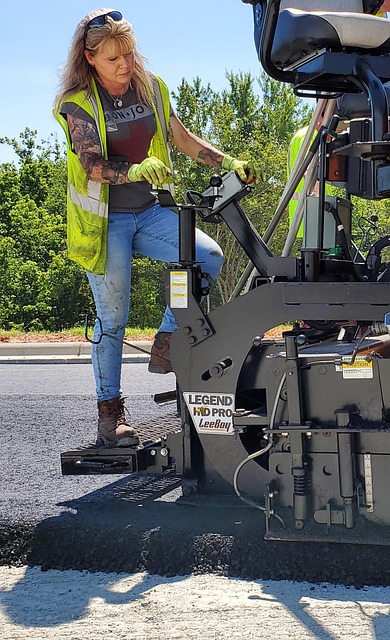Glue laminated beams (GLBs), or glulams, are advanced wood products made by bonding multiple lumber layers with strong adhesives for enhanced strength and stability. They enable longer spans, reduce material waste, minimize energy consumption, and offer cost savings over traditional wood beams, making them an eco-friendly choice for modern construction.
“Discover the strength and versatility of glue laminated beams—an innovative construction material transforming modern building practices. This comprehensive guide unravels the essence of what is a glue laminated beam, exploring its definition, benefits, and unique manufacturing process. From structural applications to advantages over traditional lumber, we delve into the key aspects. Learn how the choice of glue plays a pivotal role in beam strength, and understand quality control measures for reliable production. Optimize your construction projects with this versatile solution.”
- Understanding Glue Laminated Beams: Definition and Benefits
- How Glue Laminated Beams Are Manufactured
- Applications: Where to Use Glue Laminated Beams
- Advantages Over Traditional Lumber for Construction
- Selecting the Right Type of Glue for Beam Strength
- Ensuring Quality Control in Glue Laminated Beam Production
Understanding Glue Laminated Beams: Definition and Benefits

Understanding Glue Laminated Beams: Definition and Benefits
What is a Glue Laminated Beam? Glue laminated beams, commonly known as glulams, are engineered wood products created through a specialized manufacturing process. This involves gluing together multiple layers of dimensional lumber, which are then pressed under high pressure and heat to form a single, strong beam. The glulam’s unique structure allows it to span longer distances than conventional wood beams while maintaining exceptional strength and stability.
Glulams offer several advantages for construction projects. They contribute significantly to sustainable building practices due to their superior structural efficiency, which reduces material waste compared to conventional lumber. Moreover, the glulam manufacturing process explained involves minimal energy consumption and emissions, making them an eco-friendly option. When comparing glulams to traditional wood beams, the former often prove more cost-effective and quicker to install, especially in complex architectural designs. To learn more about how glulams can enhance your project, give us a call at (607) 369-9341.
How Glue Laminated Beams Are Manufactured

What is a Glue Laminated Beam? Glue laminated beams are engineered wood products created through a meticulous manufacturing process that combines multiple layers of wood veneers with adhesive. Each veneer, typically from high-quality softwood sources, is carefully selected and glued together in alternating directions to form a strong, uniform structure. This method enhances structural integrity while also providing dimensional stability.
The production begins by cutting the veneers to specific dimensions, ensuring precise alignment for optimal bonding. These layers are then pressed and bonded under controlled conditions using strong adhesives designed to withstand significant forces. After curing, the glulam (short for glue laminated) beams are cut to the desired length and can be further finished or left in their natural state, ready for installation. This modern structural system finds its applications in contemporary architecture, offering designers and builders versatile solutions for complex spans and unique forms. You can visit us at 18 Clifton St, Unadilla, NY 13849 to learn more about glulam structural systems design guide and how glue lamination enhances these beams’ performance in various construction projects.
Applications: Where to Use Glue Laminated Beams

Glue Laminated Beams, also known as glulam beams, are engineered wood products that offer exceptional strength and versatility for construction projects. These beams are created through a process where multiple layers of lumber are bonded together with strong adhesives under high pressure. This innovative technique results in a beam with superior structural integrity compared to traditional solid lumber.
What is a Glue Laminated Beam? They are ideal for various applications, providing an efficient and cost-effective solution for spans that require support without the visual disruption of steel I-beams. From residential buildings and timber frames to commercial structures and bridges, glulam beams offer advantages over steel, such as better aesthetics, reduced weight, and increased fire resistance. The durability and strength of glue lamination techniques make these beams a preferred choice in demanding construction environments, ensuring safety and longevity for any project. Explore the benefits and discover why many professionals choose glulam beams by visiting us at unalam.com.
Advantages Over Traditional Lumber for Construction

Glue laminated beams, also known as glulam, offer significant advantages over traditional lumber for construction projects. These structural elements are engineered by bonding together multiple layers of wood laminates with powerful adhesives, resulting in exceptional strength and stability. Unlike lumber, which can be subject to warping, cracking, or splitting due to variations in moisture content and environmental conditions, glulam maintains consistent dimensional integrity, ensuring long-term reliability.
One of the key benefits of using glue laminated beams is their superior structural performance. Glulam design considerations for architects include high strength-to-weight ratio, enabling longer spans without intermediate supports, and enhanced structural integrity due to the glue lamination process. This makes glulam an ideal choice for modern construction techniques, allowing for more open and flexible interior spaces. For those seeking innovative and durable solutions, exploring glue laminated beam construction techniques can prove invaluable. Visit us at unalam.com to learn more about how glulam can revolutionize your building projects.
Selecting the Right Type of Glue for Beam Strength

When considering glue laminated beams for construction projects, understanding the critical role of adhesive selection is paramount. The right type of glue is instrumental in enhancing the structural integrity and overall strength of these innovative building materials, which are commonly known as glulam (glue laminated wood) or composite wood beams.
The glulam vs. composite wood beams debate often centers around the unique advantages each offers. Glue lamination, a meticulous process where layers of wood are bonded together with strong adhesives, transforms individual boards into robust structural elements. This method significantly improves timber beam strength, making it a preferred choice for modern construction. At UNAlam (find us at unalam.com), we advocate for this process because it ensures longevity and stability in various architectural applications, from residential structures to commercial buildings. How glue laminates improve timber beam strength lies in the science of bonding—a crucial aspect that sets glulam apart from traditional wood beams.
Ensuring Quality Control in Glue Laminated Beam Production

Ensuring Quality Control in Glue Laminated Beam Production
What is a Glue Laminated Beam? A glulam beam, or glue laminated beam, is a structural element crafted through a specialized process that binds multiple layers of wood together with adhesive. This innovative technology, known as glue lamination, results in beams with exceptional strength-to-weight ratios and dimensional stability. The production of these high-quality beams requires meticulous quality control measures to ensure their integrity and performance throughout construction projects.
Glulam beam benefits and applications are numerous; they offer superior structural capabilities, reduced material waste compared to traditional wood beams, and enhanced resistance to warping or splitting. What makes glue laminated beams superior is not just their durability but also their versatility in various architectural designs. To experience the advantages of glulam beams firsthand, visit us at 18 Clifton St, Unadilla, NY 13849 anytime. Glue lamination technology in construction continues to revolutionize building practices, making structural elements more efficient and sustainable.
Glue laminated beams, or GLB, represent a modern solution for construction projects seeking enhanced structural integrity and efficiency. By understanding their manufacturing process, applications, and benefits over traditional lumber, builders can leverage the advantages of GLBs to create robust, durable structures. When selecting glue laminated beams, ensuring quality control and choosing the right type of adhesive are paramount. This article has provided a comprehensive overview, equipping readers with the knowledge needed to make informed decisions when incorporating what is a glue laminated beam into their building plans.














